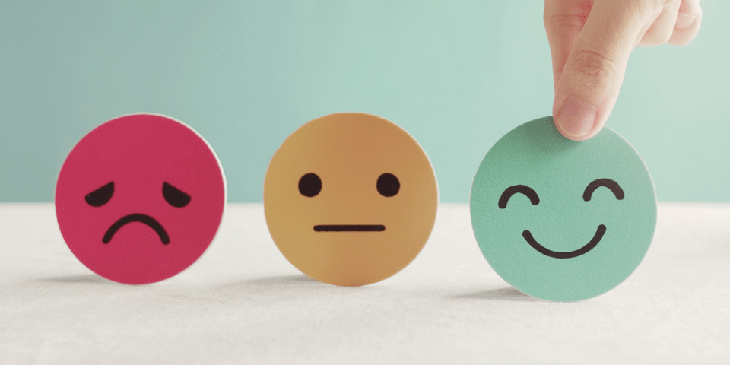
Verbal abuse is often downplayed compared to physical or sexual abuse, but its damaging consequences can be just as severe and enduring. Experts caution that parental yelling and threats can result in long-term harm comparable to physical abuse, emphasizing the importance of addressing such behavior.
If you or someone close experienced frequent yelling or threatening language from a parent during childhood, the repercussions of verbal abuse, even from non-parental figures like caregivers or teachers, may extend into adulthood. This form of childhood maltreatment is linked to heightened risks of anger, depression, substance abuse, self-harm, and obesity.
Recognizing the immediate and lasting impacts of verbal abuse, a systematic review in the October 2023 edition of Child Abuse & Neglect: The International Journal argues for treating it as a distinct form of childhood maltreatment. This perspective shift could facilitate targeted prevention efforts and address the enduring harm inflicted by words, according to the authors.
“Looking across studies, it is clear that childhood verbal abuse by adults has an immediate impact, leaving children feeling unloved, abandoned, and humiliated, which extends across the life span, leading to depression, anxiety, and suicidality,” said Shanta Dube, PhD, the lead author of the study. She is a researcher and the director of the master of public health program at Wingate University in North Carolina. This “hidden problem” may bring about a host of problems as children become adults and needs to be on the radar of detection, she also added.
Hilit Kletter, PhD, a psychiatrist at Stanford Medicine Children’s Health and the director of the Stanford Stress and Resilience Clinic in California, underscores the importance of addressing verbal abuse. According to the study, the repercussions of verbal abuse are equally noteworthy when compared to the consequences of physical or sexual abuse.
“It’s not really recognized to be as serious as some other forms of maltreatment — these findings add strong support to why that needs to change,” she said.
Most Forms of Childhood Verbal Abuse Come from Parents
A comprehensive examination of 149 quantitative and 17 qualitative studies was conducted by researchers to evaluate the current definitions and measurement methods of child verbal abuse. The analysis revealed that the primary culprits of childhood verbal abuse by adults were parents (76.5 percent), other adult caregivers in the home (2.4 percent), and teachers (12.71 percent). Additionally, coaches and police were identified, each contributing to 0.6 percent of the cases.
Although verbal abuse may often be downplayed — by either the perpetrator, the victim, or sometimes, both — the damage it can cause is significant, Dr. Kletter said. “The impacts of childhood verbal abuse are seen in children and adolescents, and if left untreated, it can go well into adulthood and it impacts both mental and physical health. Both in research and in my own experience, it can result in a whole host of different conditions, including post-traumatic stress disorder (PTSD), depression, increased risk of substance abuse, and suicidal ideation — so it does have very significant consequences,” she said.
In Dr. Dube’s recent work with substance use recovery centers, she has heard from counselors how childhood verbal abuse has become a common issue among those recovering. “It can manifest as mental distress, substance use disorders, and problems with how we relate to others — and we must provide support, care, and empathy for those who still struggle,” she explained.
Shouting and Screaming – Most Documented Type of Childhood Verbal Abuse
Different studies employed a diverse array of terms related to “verbal abuse,” including phrases like “verbal aggression,” “verbal hostility,” and “verbal abuse.” This underscores the importance of establishing standardized terminology within this domain.
While shouting and screaming emerged as the most frequently reported forms of verbal abuse, the authors emphasized that volume alone should not be the sole criterion for defining verbal abuse. Factors such as intent, delivery, and the immediate impact on children should also be taken into account.
Verbal Abuse Falls Under ‘Emotional Abuse’
The Centers for Disease Control and Prevention (CDC) categorizes child maltreatment into four subtypes: physical abuse, sexual abuse, emotional abuse, and neglect.
These classifications serve as the foundation for comprehending the prevalence of abuse, guiding interventions, and monitoring affected populations. Presently, threats and various forms of verbal abuse are encompassed within the category of emotional abuse. However, according to the authors, this inclusion is problematic. They argue that to adequately recognize, study, and prevent childhood verbal abuse, a standardized definition distinct from other forms of abuse is crucial.
Current definitions often encompass behaviors harmful to a child’s well-being, such as belittling, shouting, and threatening language. Yet, there is inconsistency in these definitions across studies, posing a challenge, as noted by the authors and Kletter.
For instance, in the context of sexual abuse analysis, the variation in definitions becomes apparent. One study might define sexual abuse broadly as any unwanted touching, while another may narrow it down to penetration only. This lack of consistency in terminology hinders the ability to accurately recognize and measure the impact of abuse, emphasizing the need for standardized definitions in research.
Verbal Abuse Fine in Some Cultures
Verbal abuse often goes unrecognized, in part because it’s a complicated issue, Kletter stated. “There are cultural factors that go into it. In some cultures it’s considered acceptable. It’s like, ‘This is how I was disciplined, and so this is how I choose to discipline my children.’”
Experts Want to Address Verbal Abuse by Honing In on the Adult’s Actions
The researchers advocated for the term “childhood verbal abuse” instead of “emotional abuse,” which they deemed ambiguous and centered on the victim’s reaction. By adopting the term “childhood verbal abuse,” the emphasis shifts to the actions of the adult. They suggested that establishing this distinction as a distinct subtype could serve as a foundational step for prevention.
Great strides have been made when it comes to increasing awareness and interventions that address physical and sexual abuse perpetrators, leading to the lowering in such forms of maltreatment, said Dube. “If we focus on ‘verbal abuse’ by perpetrators rather than just ‘emotional abuse’ among victims, we may develop similar actions to prevent childhood verbal abuse and its consequences. Breaking the intergenerational cycles starts with the adults.”
The research received financial support from Words Matter, a charitable organization dedicated to enhancing the mental and physical well-being and development of children by eradicating verbal abuse directed at them by adults in their environment.
What to Do With the Impact of Childhood Verbal Abuse
Kletter suggested that if an individual acknowledges having undergone verbal abuse during childhood and perceives its persisting adverse impact, psychotherapy is the recommended course of treatment.
“While there are significant consequences to this type of abuse, I want to emphasize that it’s also very treatable. If you are suffering from the impact, do seek help, because we do have very effective interventions, and it can make a very big difference in someone’s life,” she said.
According to Kletter, cognitive-behavioral therapy (CBT) is considered the most evidence-based form of psychotherapy for individuals who have endured verbal abuse during childhood. The American Psychological Association suggests that employing CBT in the treatment of trauma and PTSD arising from childhood experiences can assist individuals in reshaping their thoughts and beliefs about the trauma, facilitating their recovery from the ordeal.



